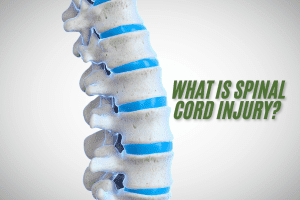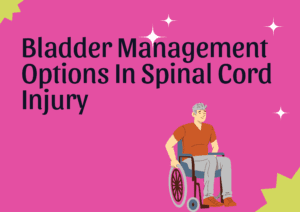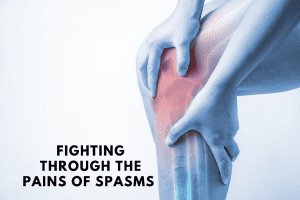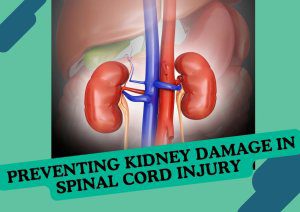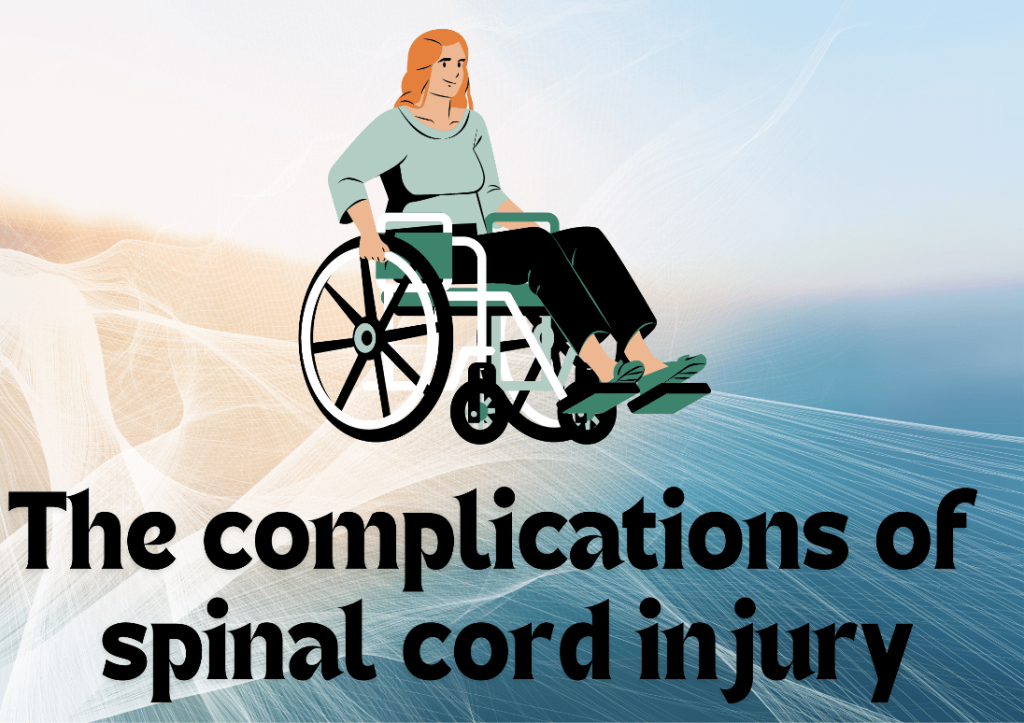
By Scihealthhub – October 10, 2024
Spinal cord injury (SCI) is a devastating condition that affects not only the ability to move and feel but also puts individuals at a high risk of developing several long-term health complications.
These complications, also known as secondary health conditions or comorbidities, vary in severity, often impact multiple organ systems, and significantly affect the quality of life for individuals living with spinal cord injury.
It’s important for spinal cord injury survivors and their caregivers to understand these potential complications so they are better equipped to manage them effectively.
In this article, we will examine the various complications associated with spinal cord injuries, why they occur, and strategies for prevention and management.
1. Frequent Urinary Infections
This is a very common complication of spinal cord injury. People with spinal cord injury often suffer multiple episodes of urinary tract infections (UTIs) throughout their lifetime.
One study demonstrated that people with spinal cord injury experience an average of 18 episodes of UTIs and about 1.8 episodes of fever due to UTIs per year (1).
Spinal cord injury disrupts the communication between the bladder and the brain, resulting in bladder drainage problems that increase the risk of developing UTIs.
Although the treatment of UTIs has greatly improved over the years, they remain the second leading cause of death in people with spinal cord injury (2).
Proper bladder management (e.g., condom catheters, intermittent catheterization), increased water intake, regular urine tests, and good hygiene practices can help prevent or reduce the risk of UTIs.
We have a detailed article on how to mitigate this risk and prevent UTIs.
2. Kidney Damage
This is a serious complication of spinal cord injury. People living with spinal cord injury are at a higher risk of developing kidney damage, which can lead to kidney disease. In the past, kidney disease was the leading cause of death among individuals with spinal cord injury (3).
A 2006 study involving veterans with spinal cord injuries in the USA found that over 1 in 3 of them (about 35%) had long-term kidney disease (4). This figure is more than twice that reported in the general population, which is about 15% (5).
Factors such as repeated UTIs, high bladder pressure, vesico-ureteral reflux, kidney stones, and the use of catheters contribute to kidney damage in people with spinal cord injury.
To reduce the risk of kidney damage, individuals with spinal cord injury should practice good bladder management, drink plenty of water, eat healthily, avoid smoking, monitor their blood pressure and blood sugar, and undergo regular medical check-ups.
You might like to read our detailed article on how to prevent kidney damage in people with spinal cord injury.
3. Muscle Spasms
Up to 80% of people with spinal cord injury may experience muscle spasms or spasticity at some point in their lifetime.
Muscle spasms and spasticity involve sudden involuntary muscle contractions that can cause uncontrolled movements or stiffness. These spasms can be unpredictable, painful, uncomfortable, and disruptive to sleep.
Common triggers for spasms include UTIs, a full bladder, pressure sores, constipation, tight clothing, or anything that causes skin irritation or pain.
Treatment involves identifying and addressing the cause of the spasms. Medications such as baclofen, pregabalin, and tizanidine may also be prescribed to reduce spasms.
You may find our comprehensive article on managing spinal cord injury muscle spasms, as well as a personal story on the torment of spasms, very helpful.
4. Pressure Sores
Loss of movement and sensation in the legs can cause people with spinal cord injury to develop skin damage and pressure sores if they sit or lie in the same position for too long.
Commonly affected areas include the buttocks, hips, sacrum, heels, and ankles.
Pressure sores are a major complication for people with spinal cord injuries, affecting 25–66% of this population (6).
Doctors may treat pressure sores with wound dressings, debridement (removal of dead tissue), oral antibiotics, and, in severe cases, surgery. It’s important to regularly change positions and use special mattresses and wheelchair cushions.
If left untreated, pressure sores can become deep enough to affect muscles and bones or lead to sepsis, a life-threatening condition.
Since pressure sores are preventable, the best approach is to take proactive measures. We have a detailed article on preventing pressure sores in spinal cord injury.
5. Autonomic Dysreflexia
Autonomic dysreflexia is a potentially life-threatening complication of spinal cord injury where the involuntary (autonomic) nervous system overreacts to a bodily insult below the level of the injury.
Experts estimate that between 48–90% of individuals with spinal cord injuries at T6 and above develop autonomic dysreflexia (7).
This condition occurs because bodily insults, which typically cause pain in individuals with normal sensation, trigger uncontrolled and massive responses of the autonomic nervous system in people with SCI. This can lead to life-threatening high blood pressure. Common symptoms include headaches, sweating, nausea, anxiety, a stuffy nose, and blurred vision.
The most common cause is an overly full bladder (75–85% of cases). Other causes include constipation, pressure sores, UTIs, tight clothing, and ingrown toenails.
Management involves immediately sitting the person up, loosening any tight clothing, and identifying and addressing the underlying cause. If the cause cannot be identified, blood pressure-lowering medications may be necessary.
The best way to manage autonomic dysreflexia is through prevention.
6. Chronic Pain
Most people with spinal cord injuries experience chronic pain, which can last for months or years. In many cases, this pain is vague and difficult to describe in terms of location and sensation.
Chronic pain in individuals with spinal cord injury can be musculoskeletal, neuropathic, or visceral in origin.
- Musculoskeletal pain is the most common type and is related to injuries to joints, muscles, or bones. Causes include trauma (initial or new), muscle overuse, joint overuse, wheelchair use, spasms, and contractures.
- Neuropathic pain is caused by abnormal nerve function or nerve damage due to spinal cord injury. People describe this type of pain as burning, tingling, pricking, sharp, shooting, squeezing, cold, or like an electric shock (8).
- Visceral pain arises from injuries to internal organs or soft tissues and can be caused by conditions such as kidney stones, bowel disease, appendicitis, or peptic ulcers.
Treatment depends on the cause of the pain. Musculoskeletal pain may be treated with rest and over-the-counter pain relievers such as nonsteroidal anti-inflammatory drugs (NSAIDs) like ibuprofen or diclofenac. Neuropathic pain or pain that does not respond to NSAIDs may require prescription medications like antidepressants (nortriptyline, imipramine), antiepileptics (pregabalin, gabapentin), or opioids. Alternative therapies, such as physical therapy, acupuncture, and cognitive behavioral therapy, may also help relieve pain.
Visceral pain is treated by addressing the underlying cause.
7. Respiratory Problems
Respiratory problems are common in individuals with spinal cord injuries, particularly if the injury is at or above the thoracic vertebrae (T6 and above).
The severity of this complication depends on the location and completeness of the injury. Spinal cord injury can weaken the muscles responsible for breathing, leading to reduced lung function and a weakened cough reflex. This increases the risk of lung infections, such as pneumonia, due to the reduced ability to clear mucus from the lungs.
Management includes smoking cessation, regular lung function tests, breathing exercises, vaccinations, and medications as needed.
8. Osteoporosis and Fractures
After a spinal cord injury, individuals experience rapid bone density loss, especially in the lower limbs. This is due to reduced mobility and the lack of weight-bearing activities, which stimulate bone formation.
As a result, people with spinal cord injury are more vulnerable to fractures, particularly in the hips and legs, even from minor trauma or during transfers.
Weight-bearing exercises (such as standing with a frame), medications like bisphosphonates, and calcium/vitamin D supplementation are often recommended to maintain bone health. Fall prevention strategies and regular bone density scans are also essential.
9. Anxiety and Depression
Anxiety and depression are common complications of spinal cord injury, affecting up to 30–40% of survivors. The sudden, life-changing nature of spinal cord injury, combined with chronic pain, immobility, and social isolation, contributes to these mental health challenges.
Depression can reduce motivation to engage in rehabilitation and self-care, worsening physical health outcomes. Anxiety may increase concerns about future health complications, creating a cycle of stress.
Psychological support, including counseling and cognitive behavioral therapy (CBT), is key to managing mental health. When necessary, medications may also be prescribed. Peer support groups and building a strong social network can help mitigate the effects of anxiety and depression.
10. Syringomyelia
Syringomyelia occurs in about 3 to 5 percent of individuals with spinal cord injuries. It involves the formation of a fluid-filled cyst (syrinx) within the spinal cord. Over time, this cyst may enlarge, compressing and damaging the spinal cord and nerve fibers.
While many people with syringomyelia may not have symptoms, others experience progressive pain, muscle weakness, numbness, stiffness, and headaches.
If syringomyelia does not cause symptoms, periodic monitoring is often recommended. For symptomatic cases, over-the-counter pain relievers like NSAIDs and paracetamol may be used. If these are ineffective, prescription medications like opioids, tricyclic antidepressants, or anticonvulsants may be necessary. Severe cases may require surgery to drain the fluid-filled cyst.
11. Deep Vein Thrombosis (DVT)
Deep vein thrombosis (DVT) is a common and potentially dangerous complication of spinal cord injury, particularly during the initial hospital stay.
DVT occurs when a blood clot forms in one or more deep veins, usually in the legs or thighs. In some cases, a portion of the clot can break off and travel to the lungs, leading to a life-threatening condition known as pulmonary embolism.
One study reported that 43% of individuals with SCI developed DVT between 7 days and 1 month after their injury. Most of these DVT cases (81%) occurred in the leg veins (9).
Factors contributing to the high risk of DVT include lack of mobility, reduced blood flow, and possible blood vessel injuries.
Symptoms of DVT include swelling, pain, warmth, and changes in skin color in the affected leg. Symptoms of pulmonary embolism include sudden difficulty breathing, chest discomfort, fainting, and coughing up blood.
To prevent DVT, doctors may prescribe blood thinners (anticoagulants) for two to three months following injury. Additional preventive measures include the use of graduated compression stockings, leg compression pumps, and regular exercise.
12. Cardiovascular Diseases
Individuals with spinal cord injuries are at an increased risk of cardiovascular diseases, such as heart disease and stroke. In fact, cardiovascular disease is now the leading cause of death for men and women of all races with spinal cord injury (10).
Spinal cord injury disrupts the autonomic nervous system, which controls heart rate, blood pressure, and vascular tone. Reduced physical activity, changes in body composition, and altered metabolism contribute to cardiovascular risk factors, including hypertension, obesity, diabetes, and high cholesterol. Additionally, individuals with spinal cord injury may experience autonomic dysreflexia, which can cause dangerous spikes in blood pressure.
To manage cardiovascular health, people with spinal cord injury are encouraged to engage in tailored exercise programs, maintain a healthy weight, and manage their diet, blood pressure, cholesterol, and blood sugar levels. It’s also important to avoid smoking, limit alcohol consumption, and undergo regular monitoring for early signs of cardiovascular disease.
In conclusion, a spinal cord injury increases the risk of developing several serious, and sometimes life-threatening, complications. Early and effective interventions are crucial to managing and preventing these complications.
We hope you found this article helpful. Please subscribe to our newsletter and follow us on social media for more health tips and insights.

